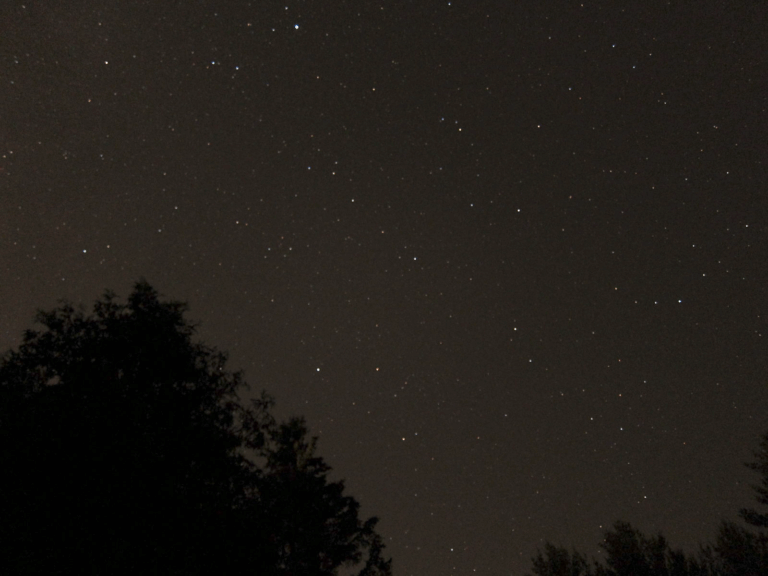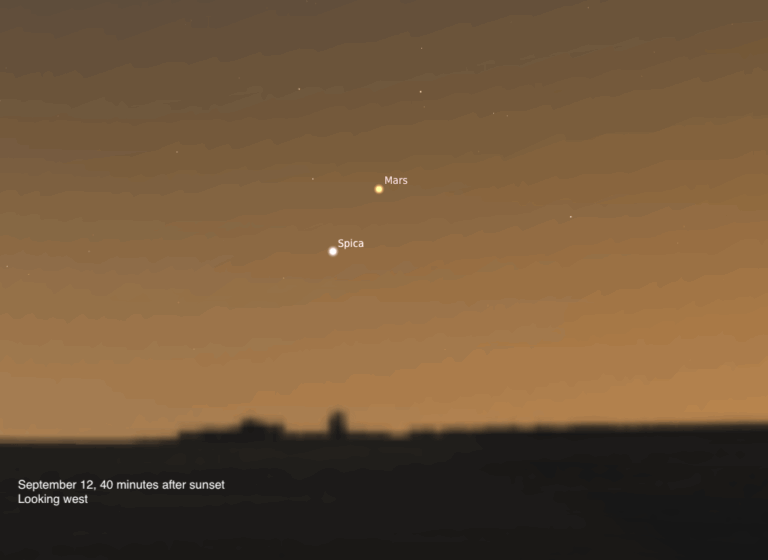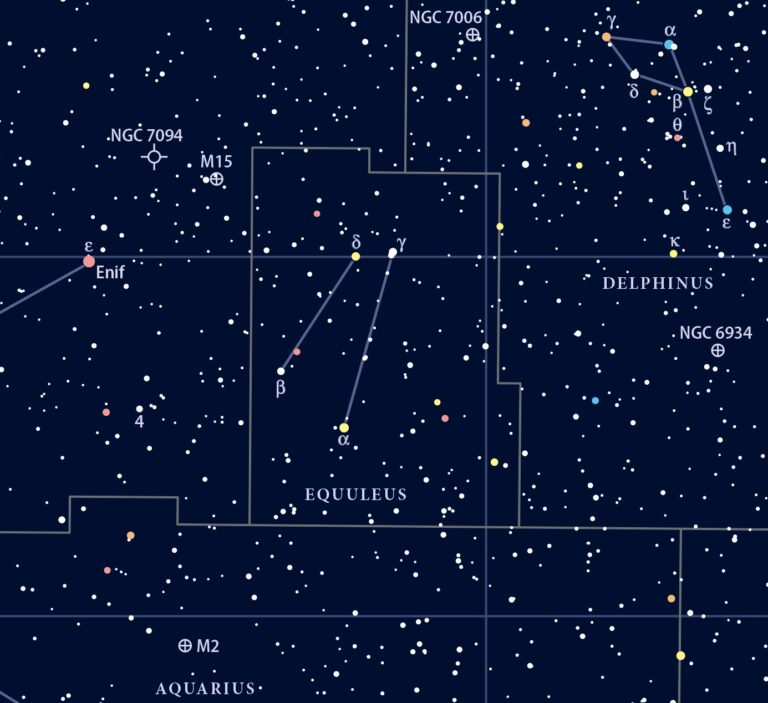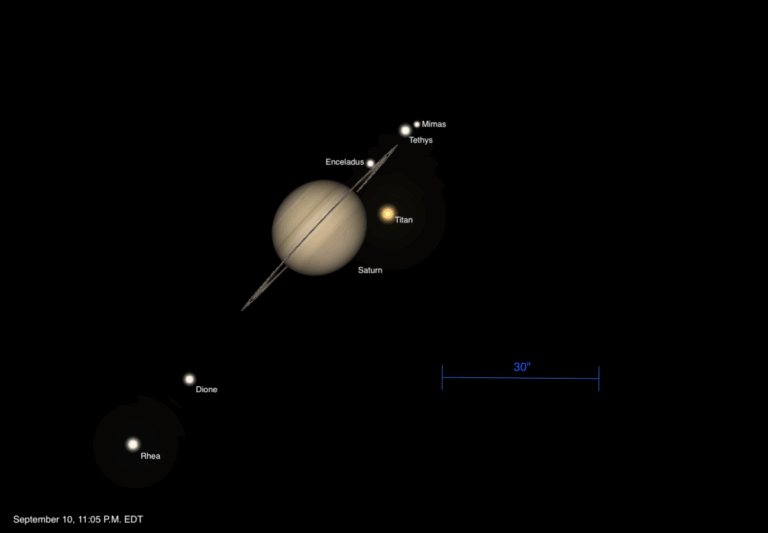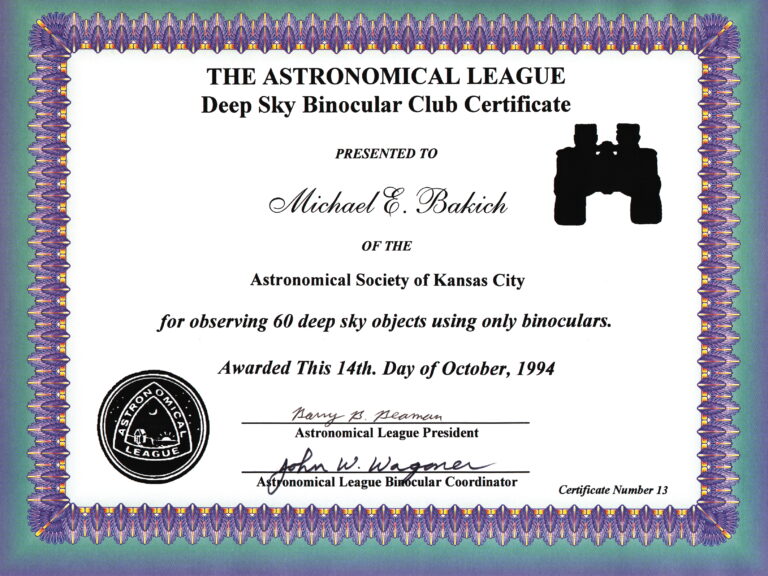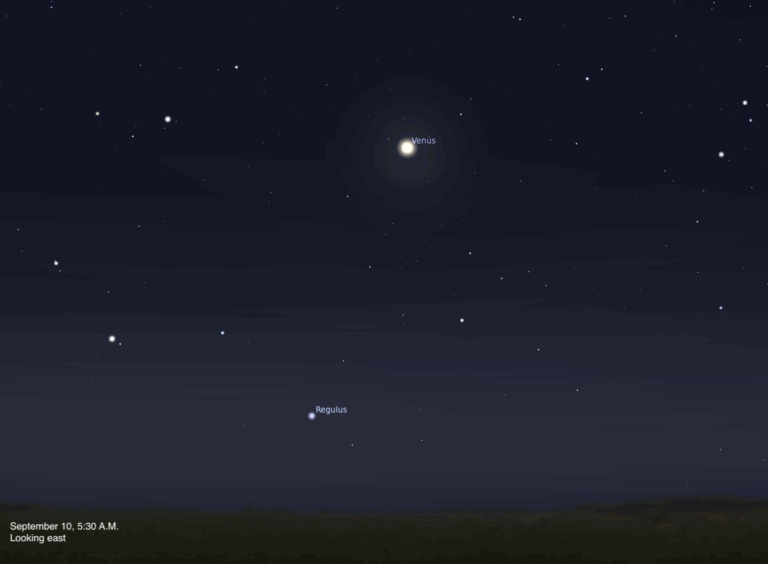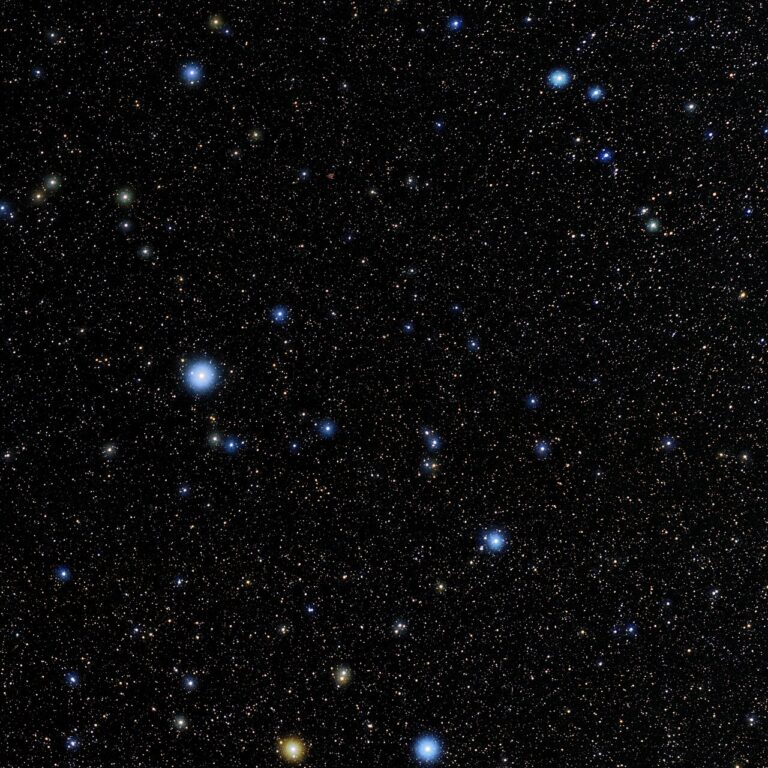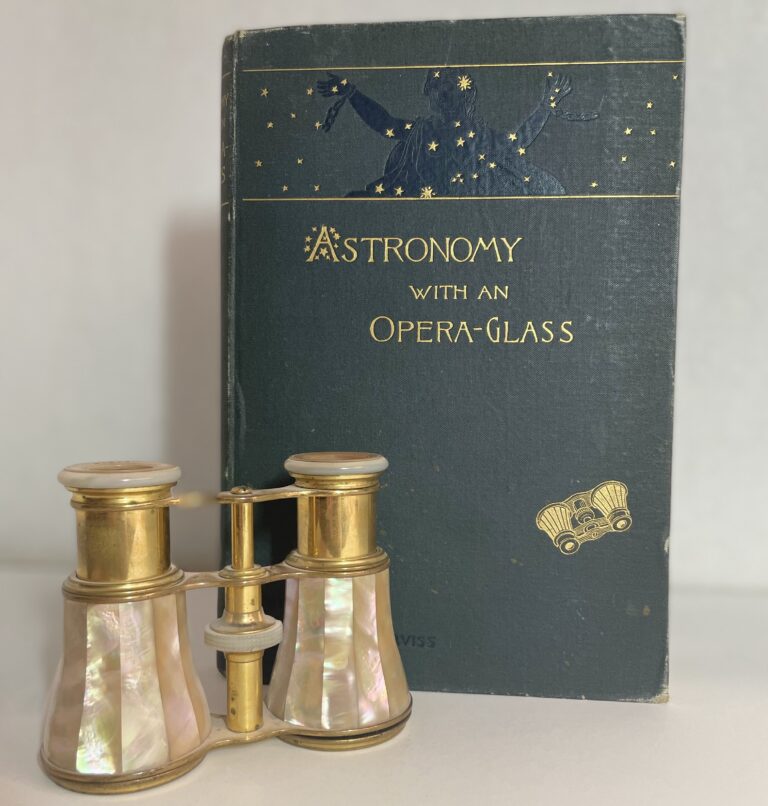Key Takeaways:
This article originally appeared in our December 2016 issue.
More than 250 people funnel into the North Door bar on the East Side of Austin, find a place to sit or stand, and look toward the stage. A projector beams trivia questions about astronomy onto a nearby wall, and astronomers give away NASA stickers and Eagle Nebula posters at a table. As University of Texas at Austin astronomers Rachael Livermore and Jeff Silverman walk across the stage, the crowd starts to hush. “Welcome to Astronomy on Tap, Austin, Texas,” Livermore says into the microphone.
This monthly public event is a hit, and it’s not the only one. In cities around the globe, hundreds of fans gather in bars, taverns, or pubs on weekday evenings to hear about a potpourri of the current hottest topics in astronomy. Themes range from how astronomy is portrayed in the movies to why Pluto isn’t a planet to what the heck dark matter is. The talks are brief, fun, and accessible — plus, there’s beer.
When Meg Schwamb, now a postdoctoral fellow at the Institute of Astronomy and Astrophysics at Academia Sinica in Taipei, Taiwan, planted the Astronomy on Tap seed and organized the first event, the idea was just to have fun communicating astronomy and create an environment where people can enjoy themselves while also learning about the science. It also motivates people to learn more about the Science, Technology, Engineering, and Medicine (STEM) fields, Schwamb says.
“Astronomy is the gateway drug,” says Schwamb. “It’s the thing that gets people into STEM.” Since the first few events only four years ago, Astronomy on Tap has sprouted in 19 other locations, and it continues to grow.
Branding a trend
In early 2012, Schwamb organized two Astronomy Uncorked events at a wine bar in New Haven, Connecticut, while she was a postdoc at Yale University. A few months later, she sat down with Emily Rice, then a postdoc at the American Museum of Natural History in New York City, and told her about those outreach events and how she wanted to bring her brainchild to New York.
Rice, now an assistant professor at the College of Staten Island, loved the idea of reaching the non-academic community and opening up astronomy to those who don’t think of themselves as armchair astronomers or hobbyists. First, though, she thought it needed a new, more-inclusive name: Astronomy on Tap. They planned the first Astronomy on Tap event for April 2013. When Schwamb moved to Taiwan later that summer, Rice took over the New York City events.
The program continues to grow, in part, Rice says, because “it unites the stereotypical scientist persona with the very human, very social, very creative persona.”
Often, scientists hold public lectures that dive deep into one topic. But those events can feel stuffy, academic, and, frankly, less inviting for most people. Instead, Schwamb and Rice wanted to create an environment that encourages humor and a conversational tone, to make the topics more accessible, and to do this at a place where people already hang out. “I think in my mind, it was like bringing astronomy to the people rather than having the people come to us,” Schwamb adds.
Whereas most public outreach in the field is geared toward kids — how you, yes you, can be an astronomer and study the universe — Astronomy on Tap takes a different approach. It’s aimed exclusively toward adults.
Each event has several 10- to 15-minute talks giving the audience snippets of the best parts of astronomy. That timespan is long enough to overview new and interesting science yet short enough to keep the audience’s attention. After each presentation, people are encouraged to ask those questions they wouldn’t feel comfortable voicing in a lecture hall. (How does terraforming work? What does dark energy mean for the universe’s future?)
Each Astronomy on Tap event also usually has a pub game — like trivia questions with answers embedded in the talks, with prizes like a McDonald Observatory apron (for the Austin event), astronomy-themed stickers, and even Neil deGrasse Tyson’s trash. Yes, literally, trash that he picked up and threw in his trash can, says Schwamb. (The Astronomy on Tap organizers then bring said trash can to the bar and people can dig through — if they so choose.) And, of course, there’s beer.
One look around a room at an Astronomy on Tap event shows that the plan she and Rice came up with is working.
“It unites the stereotypical scientist persona with the very human, very social, very creative persona.”
A different spin
So far, there are 20 Astronomy on Tap programs: Ann Arbor, Michigan; Austin, Texas; Baltimore; Bay Area, California; Champaign-Urbana, Illinois; Chicago; Columbus, Ohio; Denver/Boulder; Lansing, Michigan; Los Angeles; New Haven, Connecticut; New York City; Rochester, New York; Santa Barbara, California; Santiago, Chile; Seattle; Taipei, Taiwan; Toronto; Tucson, Arizona; and Washington, D.C.
Part of the beauty of this program is that while there are many similarities — short, fun talks about astronomy held at a bar — event organizers put their own local spin on it. “I think it’s great for everyone to adapt it to their community, to their audience,” says Rice.
While not by design, Astronomy on Tap is most-often organized by postdoctoral fellows, and such positions are usually two or three years long. That has both bad and good aspects. The bad is that the organizers are only around for a few years, and so the Astronomy on Tap programs are in flux. The good is that they often bring the program with them to their next homes.
For example, both Livermore and Silverman are moving on from organizing the Austin program. Silverman’s postdoc position at the University of Texas at Austin ended in August 2016, and he plans to start an Astronomy on Tap program wherever he goes next. Livermore will remain in Texas for another year, but she decided to pass the baton to a group of excited organizers: 10 postdocs and graduate students.
A successful combination
Astronomy on Tap seems to grow by diffusion. At the American Astronomical Society meeting in January 2014, Rice presented a poster about the New York City Astronomy on Tap events. That was Silverman’s introduction to the program. He bounced the idea around with University of Texas at Austin faculty and postdocs, but it didn’t go anywhere until Livermore joined the department that August. The two began building up the Austin satellite of Astronomy on Tap and hosted their first event in November 2014. There’s been one every month since.
The program has grown organically due to enthusiastic organizers, the so-called “Host Stars” of each satellite location. At no location is that more apparent than Austin, which consistently has more than 200 people in the audience, making it the best-attended recurring Astronomy on Tap. It’s a testament to the work and dedication Silverman and Livermore have put into the program, Schwamb says. “It’s amazing to see what they’ve built.”
Rice told Livermore and Silverman to expect 50 to 60 people at the initial Austin event, but instead 140 showed up. (Some of the credit for this impressive turnout goes to Nerd Nite, a more general cool-talks-at-a-bar event, which already had a strong fan base in Austin. Plus, this Texas city has a booming technology industry.)
The Austin Astronomy on Tap logged 402 at its January 19, 2016, event. That’s not quite the most-attended Astronomy on Tap event, however. That prize goes to a New York City event held at the Intrepid Sea, Air & Space Museum to celebrate the Hubble Space Telescope’s 25th anniversary, which 430 people attended. The combination of beer and astronomy seems to make a winning recipe, no matter the city.
That enthusiastic turnout makes the many hours of organization and planning worth it, say the astronomers I spoke with. Organizers are responsible for finding presenters who can share astronomy in a fun way, scouting and renting a space at a bar, organizing games or trivia, procuring prizes, and advertising the event. “But the huge crowds we get at each event and the enthusiasm and excitement of our audience — dare I say, fans — both at the events and on social media between events is super rewarding,” says Silverman. His favorite part? “When a speaker mentions one of their most interesting astronomical observations (like the most distant galaxy or the smallest planet around another star) and the crowd cheers wildly as if a rock star was strumming the opening chords to their hit single!”
Continually growing
The success of the satellite program — events like those in Austin — also help launch new ones. At the August 2015 International Astronomical Union meeting, Silverman and Livermore presented about the Austin Astronomy on Tap program. Since then Ann Arbor, Michigan, and Tucson, Arizona, have joined the Astronomy on Tap “constellation,” as the Host Stars call it. (Tucson already had a program called Space Drafts, but they reworked it slightly to join with the global phenomenon.) “We also had interest from people in Los Angeles and San Francisco,” Livermore adds, and those locations are now up and running.
And at the American Astronomical Society meeting this past January, Astronomy on Tap organizers presented another poster about the program, and it immediately inspired several other groups. They had interest from people in Boston; San Diego; Florida; Edinburgh, Scotland; London; and Leiden, Netherlands — although none of those locations has yet hosted an Astronomy on Tap event.
Also at that January meeting, Schwamb, Rice, Silverman, Livermore, and Brian Levine (of the American Museum of Natural History) drafted a master document, which they call the Launch Manifesto — “because we love space puns,” says Rice — that they can send to those interested in starting a program in their city. The document isn’t publicly available, “but we share it with vetted organizers after they reach out to us,” she adds.
Astronomy on Tap has filled a niche in science outreach, and contains the right mix of ingredients to grow. Rice sees no sign of its stopping. “Astronomy is very international, and so it’s really only a matter of time I think before we take over the world.”



